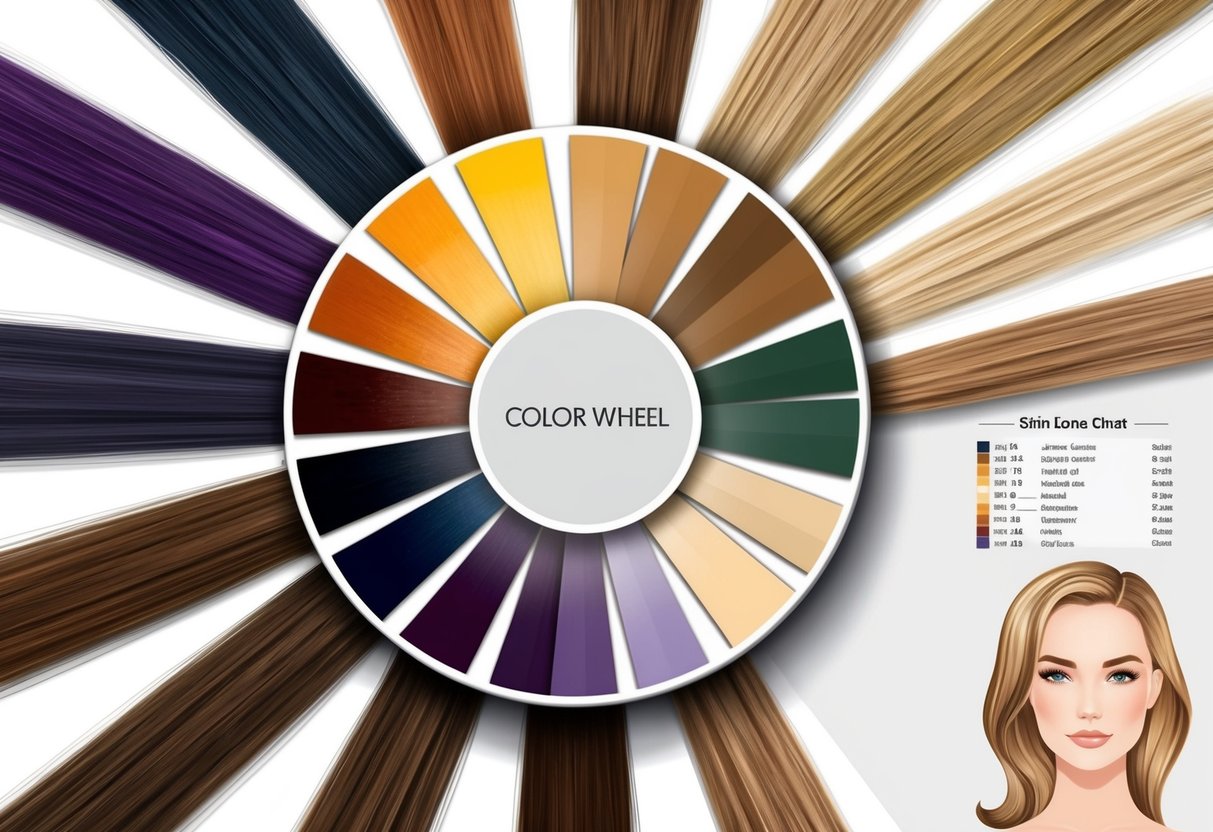
Selecting the best hair color for your skin tone can make a big difference in how natural and vibrant your appearance looks. Matching your hair color to your skin’s undertone—whether warm, cool, or neutral—is the key to enhancing your overall look and achieving a flattering result that complements your features.
While some shades can bring out the warmth and glow of your complexion, others may create contrast that feels less harmonious.
Experts recommend staying within a shade or two of your natural hair color to ensure the most seamless transition, especially for those aiming for a subtle change. It’s important to identify your skin tone and undertone before making any decisions, as this will guide you to colors that best highlight your face shape and eye color.
Following a few professional tips, like choosing warm colors for warm skin and cool shades for cool skin, helps simplify the process and boost confidence in your choice.
For a step-by-step breakdown and advice from stylists, check out this expert guide for choosing the right hair color for your skin tone.
Understanding Skin Tone and Undertones
Selecting the right hair color depends on a clear understanding of both skin tone and undertone. Identifying these aspects ensures that hair shades enhance natural features rather than clash with them.
Identifying Your Skin Tone
Skin tone refers to the visible surface color of the skin—ranging from fair to deep. Common descriptions include fair, light, medium, tan, olive, and deep.
Pinpointing skin tone is the first step because it guides the spectrum of colors that typically flatter. A quick way to distinguish skin tone is to observe skin in natural light.
Look at the area below the jawline, as this region is less likely to have redness or sun damage. Comparing skin to standardized color charts may also help provide clarity.
Tip: Matching foundations or concealers can be another method, as cosmetic brands often categorize products according to skin tone.
Recognizing Warm, Cool, and Neutral Undertones
Undertones are the colors beneath the surface of the skin. These subtle hues fall into three categories: warm, cool, and neutral.
Warm undertones show hints of gold, yellow, or peach. Cool undertones feature pink, red, or blue hues.
Neutral undertones are a balance, often appearing more olive or a mix of both. A simple method is the vein test: If veins appear greenish, skin likely has a warm undertone; if they look blue or purple, cool undertones are probable.
If it’s difficult to tell, the undertone may be neutral. Jewelry preference can also offer clues.
Gold jewelry typically suits warm undertones, while silver flatters cool undertones. Those with neutral undertones usually look good in both metals.
Seasonal Color Analysis Overview
Seasonal color analysis is a system used to align personal coloring with the four seasons: Spring, Summer, Autumn, and Winter. Each season represents a blend of skin tone and undertone, helping identify shades that harmonize with natural features.
Spring and Autumn types have warm undertones but differ in brightness and depth. Spring people often have lighter, brighter features, while Autumn features are richer and deeper.
Summer and Winter correlate with cool undertones; Summer skin tones appear softer and lighter, while Winter types are often striking, with pronounced contrast between hair, eyes, and skin.
For more on this approach, visit this guide to seasonal color analysis.
How Hair Color Interacts with Skin Tone
Hair color impacts the way skin appears by creating contrast, highlighting undertones, and enhancing natural features. Understanding which shades complement specific skin tones helps in choosing a look that feels cohesive and flattering rather than mismatched.
Color Theory Basics for Hair
Color theory guides how hair colors pair with skin undertones for best results. Skin undertones fall into three categories: warm, cool, and neutral.
Hair colors also have undertones, which can be matched or contrasted with the skin for different effects. Warm skin tones have yellow, peach, or golden undertones.
Cool skin tones have pink, red, or blue undertones. Neutral undertones are a balanced mix and can adapt to a wider range of shades.
Selecting a hair colour that matches one’s undertone usually provides a harmonious and natural appearance. By contrast, choosing a shade on the opposing end of the spectrum can make features stand out in bold ways, though this requires careful selection to avoid a clashing look.
Cool Hair Colors and Cool Skin Tones
Cool skin tones are best complemented by cool hair colors. Icy blondes, ash browns, and platinum shades suit cool undertones by intensifying their natural radiance.
Silver and cool black shades also blend well and avoid unwanted brassiness. People with cool skin tones should consider avoiding overly warm or golden hair colors, which may cause the skin to look sallow.
Instead, softer hues with blue, violet, or true-neutral bases are ideal. According to color theory and expert advice, aligning hair color undertones with skin undertones gives a seamless finish.
These recommendations are frequently highlighted by professional stylists and beauty brands such as Clairol and Garnier.
Warm Hair Colors and Warm Skin Tones
Warm hair colors are highly recommended for people with warm skin tones. Shades like caramel, honey, golden blonde, chestnut, copper, and rich chocolate work to intensify the warmth in the complexion.
These hues add glow and vibrancy without washing out the skin. Avoiding overly cool or ashy tones helps keep the skin from appearing dull or grayish.
Gold- and orange-based pigments provide the most flattering results for individuals with yellow, peach, or gold undertones. Lists of popular warm hair colors for warm skin tones include:
- Golden blonde
- Copper
- Caramel
- Warm chocolate brown
Expert guides, such as the advice found at Rush Hair and Spa Evolve, consistently recommend choosing hues within the same warmth family for best harmony.
Best Hair Color Picks for Neutral Undertones
Neutral undertones provide the most flexibility with hair color choices. Both warm and cool shades generally look balanced, so individuals can experiment with a variety of tones.
Neutral skin works well with natural browns, soft blacks, and muted blondes. People with neutral undertones also have the option to try trendy colors, like rose gold or subtle ombré effects, without overpowering their complexion.
Choosing multidimensional colors with a blend of cool and warm highlights creates depth and emphasizes natural features. Avoid choosing extremes on either end of the cool-warm spectrum unless aiming for a statement look.
The key for this group is balance and subtle variation, tailoring each hair colour to personal preference while keeping harmony with their own undertones.



